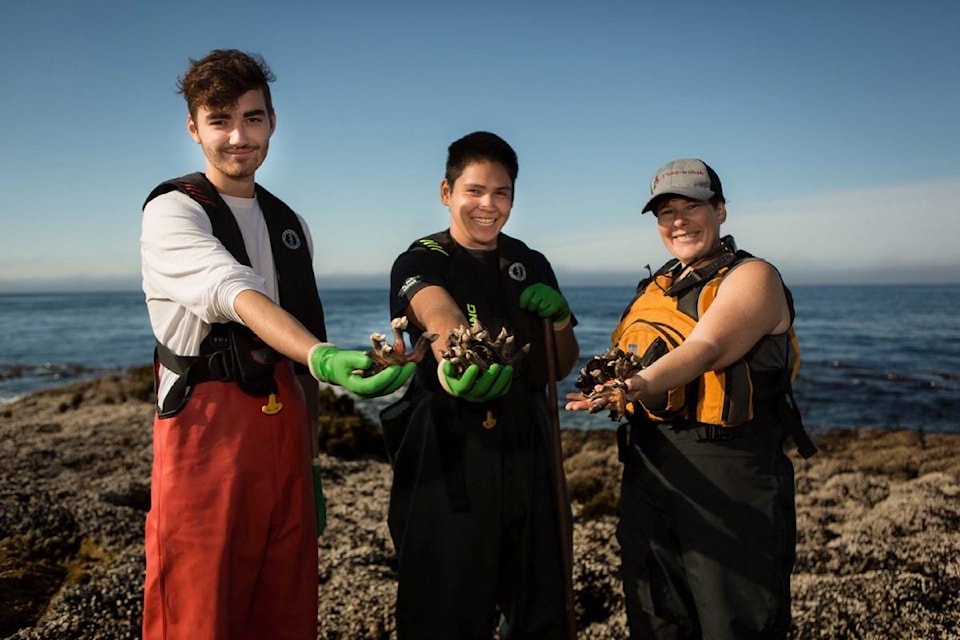Gooseneck barnacles, or Ca?inwa as called in traditional Nuu-chah-nulth First Nations language, are peculiar looking crustaceans that many say resemble dinosaur toes.
Harvesting the clam-tasting culinary delicacy is dangerous work as goosenecks are only accessible at the lowest of tides and thrive on rocks surrounded by fast moving water.
For Jessica Edwards, MSc Candidate in the Earth to Ocean Research Group at Simon Fraser University, that means scheduling her monthly research trips to the T’aaq-wiihak gooseneck fishery around the new moon.
“In May, we had to clear all our plots. So we actually hauled 500 pounds of biomass total off of six rocks,” said Edwards.
“We took it all; barnacles, muscles, and acorn barnacles as well because we are trying to get an idea of how long it takes for them to grow back, but also what the by-catch is. We counted everything.”
Over the next two years, Edwards will monitor 42 plots with the help of T’aaq-wiihak’s primary harvester Billy George and biologist Jared Dick. The goal of the gooseneck project, she states, is to improve our understanding of the ecology and sustainability of the gooseneck barnacle fishery in Clayoquot Sound.
“I imagine that my work will confirm the traditional knowledge that is already out there,” said the self-proclaimed intertidal invertebrate lover. “The harvesters are extremely knowledgeable on how much they can take and they are very dedicated to ensuring that as this fishery grows, it continues to be done in a respectful, sustainable way.”
Project partners include the Department of Fisheries and Oceans Canada (DFO), Nuu-chah-nulth Tribal Council (NTC), and T’aaq-wiihak Fisheries.
The Clayoquot Biosphere Trust also provided funding so Edwards could hire local Nuu-chah-nulth research technicians Tristen Seitcher, Dom Charlie, and Lacey Adams.
Restaurateurs interested in purchasing goosenecks are encouraged to contact the T’aaq-wiihak Fishery directly to negotiate a price. Call (250) 725-3899.
“They definitely make for an adventurous dining experience,” said Edwards. “I like to eat them with a bit of garlic butter.”
Follow @sciforthepeople on Instagram for updates on the gooseneck project.
RELATED ARTICLES
- B.C. First Nations get clarity on fishing rights from top court (AV NEWS, Apr.9, 2018)
- Research needed on impact of microplastics on B.C. shellfish industry: study (Canadian Press, May 23, 2018)
